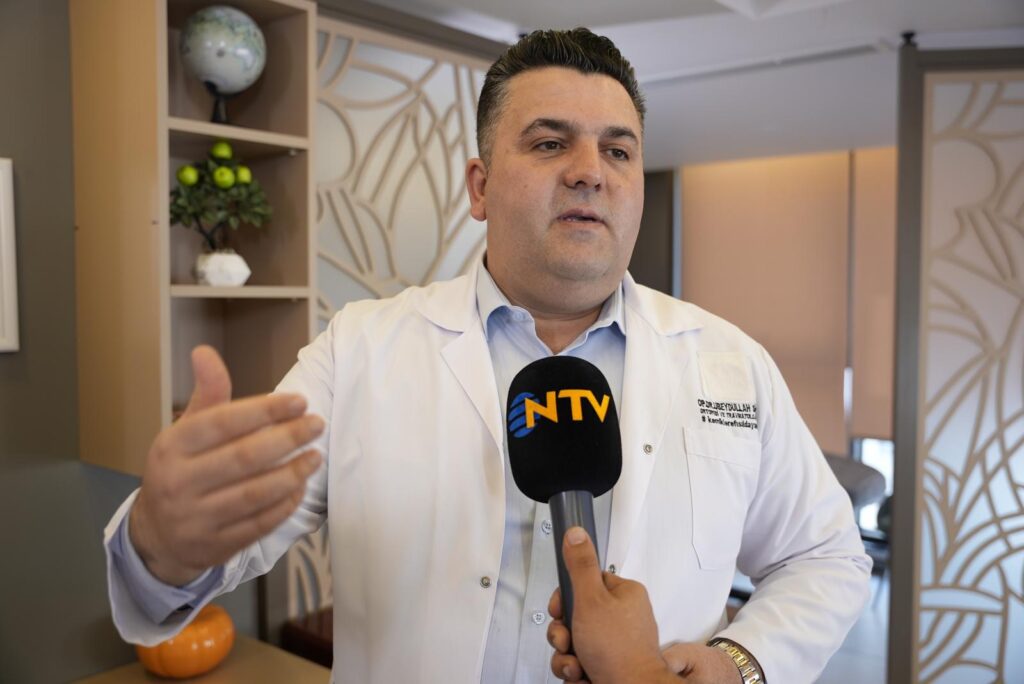
Non-Surgical Targeted Injection Treatment for Herniated Discs
Today, when we think of non-surgical treatment for herniated discs, targeted injection treatment comes to mind. Lumbar radicular pain, which radiates down the leg, is a significant public health issue and a major cause of occupational disability. This pain, also known as sciatic pain, is often caused by a herniated disc pressing on the nerve going to the leg. The pain arises from the disc pressing on the nerve root and the inflammatory response of the herniated material. This inflammation irritates the nerve, causing swelling and radiating pain from the lower back to the leg. Treatments for lumbar radicular psin include conservative, minimally invasive treatments are becoming more common. Targeted injection treatment for herniated disc is a minimally invasive method known as transforaminal epidural injection.
What is Targeted Injection Treatment for Herniated Discs
Also known as transforaminal epidural injection and selective nerve root block, this treatment involves injecting steroids and local aesthetic into the area where the nerve is compressed by a herniated disc, under imagining guidance. Unlike other non-surgical treatments, it directly targets the problem area. This allows for successful results with a smaller amount of medication. In this method, it is crucial for the needle to reach the exact area where the nerve exits. This requires fluoroscopy, which provides images of the spine from various angles. The method is preferred for both patients with nerve compression. It is also used if there is pain without nerve compression. The injection helps reduce swelling around the nerve and shrink the herniated disc. Steroids break the collagen bonds in the herniated material, allowing the body to absorb it. Fibroblasts that migrate to this area prevent further hardening of disc tissue.
How Does the Treatment Work?
In the transforaminal epidural injection method, also known as targeted injection into the compressed nerve area to provide relief. In patients with a herniated disc, when there is swelling and pain in the nerve, surrounding muscle contract, which increases pressure on the disc. This pressure makes the pain worse an can lead to more muscle spasms. This creates a cycle that limits blood flow and hinders healing. If the pain lasts longe than 3 weeks to 3 months, the brain’s pain memory will develop. Early treatment usually leads to quicker results.
In targeted injection treatment for herniated discs, the medication helps reduce nerve pain, decrease swelling, and shrink the herniated disc over time. As muscle spasms decrease, pressure on the disc also reduces. Patients often experience immediate pain relief after the procedure, though some pain may occur, which is normal. The medication’s effects typically improve after the 3rd day, with recovery occurring between 3 to 6 weeks. Even if the procedure is successful patients have important responsibilities, such as avoiding activities that worsen symptoms, attending follow-up appointments, and doing recommended exercises regularly.
How is Non-Surgical Treatment Done?
Before deciding on targeted injection treatment for a herniated disc, the patient must be thoroughly evaluated. A detailed examination is very important, and recent X-rays and MRI scans are needed. It’s essential to check if the patient’s exam findings match the MRI images. Sometimes, clinical findings may not match the MRI, and an EMG test might be required to determine if the symptoms are due to the herniated disc. The specific level of the disc herniation causing the symptoms should be identified. Targeted injection treatment can address one herniated are per procedure and can be combined with other treatments like robotic laser or radiofrequency pain treatments.
In targeted injection treatment, while the patient lies face down on a stretcher, the lower back area is marked and covered. Fluoroscopy is used to take images at the angle that allows clear access to the foraminal region. When the correct angle is found, the spine will appear like a shape of a “dog” in the image. The lower part of this “dog shape” is where the nerve exits the spinal canal. When targeting this area, the needle will appear as a dot on the fluoscopy image, which is why it is called “targeted” treatment. Under local anesthesia, the needle is guided to the target area. The needle’s position is checked from different angles. A 1 cc mixture of medication is then injected into the area, completing the procedure.
Are There Any Risks with Targeted Injection Treatment for Herniated Discs?
The risks of targeted injection treatment for herniated discs are minimal. There is a very low risk of infection. The procedure helps relieve nerve pain by reducing swelling around the nerve. When performed with proper imagining and technique, it has almost no side effects.